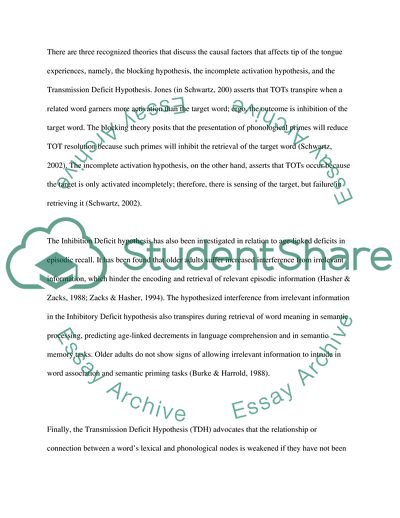Cite this document
(The Incidence of TOTs Case Study Example | Topics and Well Written Essays - 2537 words, n.d.)
The Incidence of TOTs Case Study Example | Topics and Well Written Essays - 2537 words. Retrieved from https://studentshare.org/education/1702842-psyc206-laboratory-report-tip-of-the-tongue-tot
The Incidence of TOTs Case Study Example | Topics and Well Written Essays - 2537 words. Retrieved from https://studentshare.org/education/1702842-psyc206-laboratory-report-tip-of-the-tongue-tot
(The Incidence of TOTs Case Study Example | Topics and Well Written Essays - 2537 Words)
The Incidence of TOTs Case Study Example | Topics and Well Written Essays - 2537 Words. https://studentshare.org/education/1702842-psyc206-laboratory-report-tip-of-the-tongue-tot.
The Incidence of TOTs Case Study Example | Topics and Well Written Essays - 2537 Words. https://studentshare.org/education/1702842-psyc206-laboratory-report-tip-of-the-tongue-tot.
“The Incidence of TOTs Case Study Example | Topics and Well Written Essays - 2537 Words”, n.d. https://studentshare.org/education/1702842-psyc206-laboratory-report-tip-of-the-tongue-tot.


